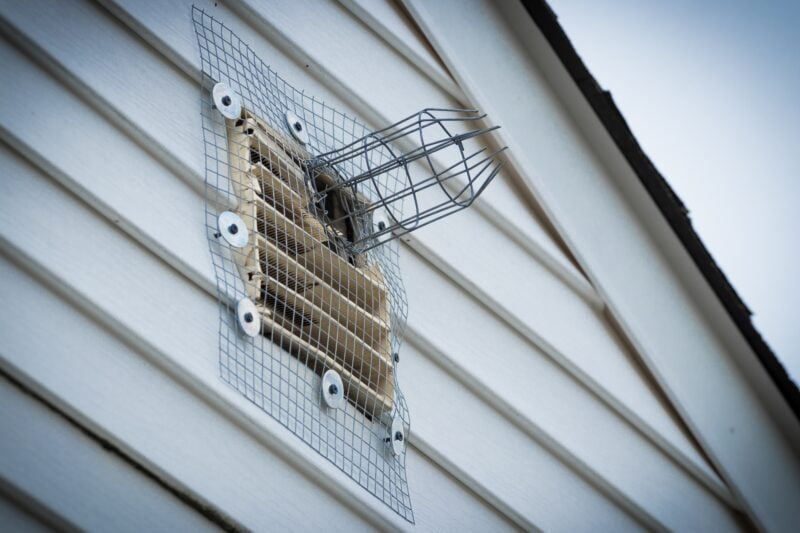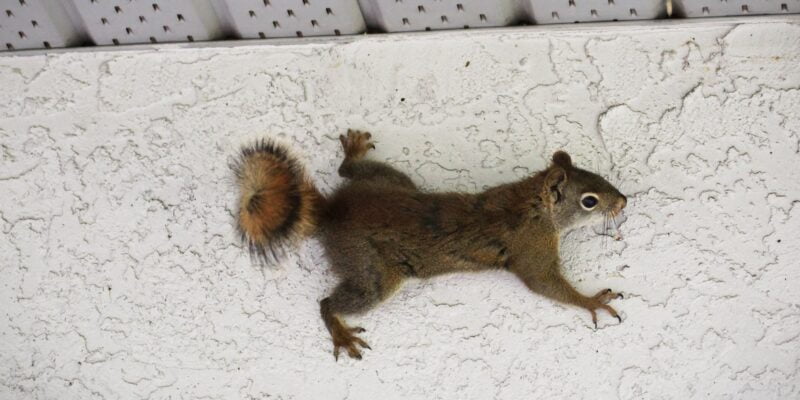Squirrels are an unwanted pests in any home as they can bite into electrical wiring, eat insulation, or chew through boards which can cause damage to your home. They can also cause irritating noises and unpleasant smells, and why they are unwanted visitors to any attic.
If you have squirrels in your home, this guide will inform you of how to get rid of them and how to prevent them from coming back.
How to Tell if there Are Squirrels in Your Attic
- There will be sounds of scratching or chewing coming from the attic ceiling.
- There will be squirrel footprints, which have four toes on the front paws and five toes on the back paws.
- There will be teeth marks in wood, chewed wires, or insulation in the attic.
- There could also be a horrible smell coming from the vents.
How to Get Rid of Squirrels in the Attic
- Find the nest. Locate where the squirrel’s nest is in the attic so you can remove it. It will be made of materials like cardboard, insulation, or leaves.
- Trap the squirrels. Placing a one-way cage door outside the entry points will catch squirrels as they are exiting the attic. This way you can safely relocate them to a different area, at least 5 miles away from your home.
- Pest control. Hiring a professional exterminator is the best way to deal with a squirrel infestation in your home. These experts will know how to best locate the squirrels, handle the squirrels, and ensure that they cannot return to your home.
How to Prevent Squirrels from Returning to the Attic

The most important way to prevent squirrels from getting back into your home after removing them is to seal any openings, or wildlife entry holes, that they can fit through.
Whether you are completing this job yourself, or you have hired a pest control expert, there are certain steps that need to be taken to make sure there are no openings for squirrels to get back through:
- Locate every opening in your home. You must do a thorough check from top to bottom. An expert will be able to tell you the most common places that wildlife will enter the home, including loose bricks, loose roof tiles, uncovered chimneys, damaged vents, spots under the deck, or areas where the roof meets dormers or soffits. Squirrels will be able to get through even the smallest gaps.
- Seal openings using quality tools and materials. Openings should be sealed with steel screens or metal flashing so that animals cannot chew their way back through. Use a screwdriver rather than nails or glue so it is completely secure. Using wood or caulk can just lead to further issues in the future if animals are able to get back inside the home. Using quality materials will ensure lasting protection.
- Fill any holes. For uncovered chimneys, you can purchase a steel chimney cap. For gaps in vents, you can use mental vent covers. Smaller holes in the brickwork can be filled with drywall and painted over. Gaps around windows should be filled with sealant.
- Repair any damage. If your vent is damaged, you can replace it and cover it with sturdy metal mesh. Larger holes may need replacement bricks to fill them or a special filler to keep the structural integrity of the wall. If the entry point is large, or there is damage to the roof, its best to hire a roofing contractor to assist with the repairs.
What you will need to seal any openings:
- A ladder to get to any awkward spots.
- A power screwdriver and screws.
- Steel screens and metal flashing.
- Sealant.
- Steel chimney caps.
- Metal vent covers.
Though sealing the openings in your home is the most successful way to prevent squirrels from returning, there are other things you can do to help protect your home from pests:
- Trim any trees that are near your roofline. Squirrels can use tree branches to jump across to your roof, and then find a handy opening to get inside your attic. If your roof is less accessible to them, there is much less chance of them getting inside.
- Use a squirrel scarecrow. Scare them away using a plastic owl on the roof or keep them away from the yard in general by placing it on the fence. If they feel exposed and under threat on the roof, they will not try to go near it.
- Set up motion-activated sprinklers. As the squirrels enter your yard they will be sprayed with water, therefore scaring them, and keeping them away.
- Use a squirrel-proof bird feeders. Bird feeders often attract squirrels to yards, especially if they contain nuts, sunflower seeds, or corn. If the squirrels cannot easily get to the food inside, or if you use food that squirrels are not attracted to, they have less reason to enter your yard in the first place.













Comments